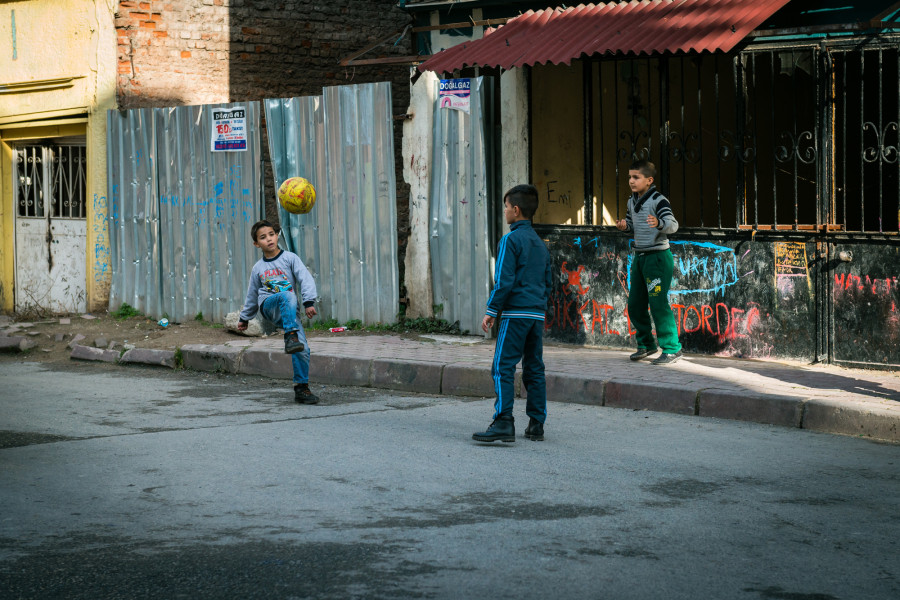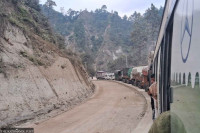Opinion
Where do the children play?
The song could be set in present-day Kathmandu—it would not look out of place.
Sabin Ninglekhu Limbu
Well you’ve cracked the sky, scrapers fill the air
But will you keep on building higher‘Til there’s no more room up there?
Will you make us laugh, will you make us cry?
Will you tell us when to live, will you tell us when to die?
I know we’ve come a long way. We’re changing day to day
But tell me, where do the children play?’
Cat Stevens wrote the song in the 1970s, the highpoint of American sub/urbanisation through a rapid structural and architectural transformation in the aftermath of World War II. The rise of private corporations and a consumerist individuated life instigated a ‘creative destruction’ of public spaces. Stevens wryly laments the absence of the children’s right to the city in urban planning sensibilities, leading to the enclosure of public spaces and playgrounds to make way for skyscrapers and big box shopping centres. The song could be set in present-day Kathmandu—it would not look out of place.
As we speak, gated communities, high-rise buildings and shopping complexes are being rapidly designed to put together a particular brand of urban life, one that takes concrete shape on top of public open spaces and playgrounds that are quietly encroached upon and captured through what some might call ‘elite informality’—a nexus of politicians, private corporations and wealthy businessmen combining to bid for a sanitised version of ‘the good life’, albeit illegally, like the Lalita Niwas case. In this version of ‘urban society’ thus refashioned, ‘urban gigantism’ holds sway over other matters of everyday life that are important and necessary, such as the children’s right to play without them being reduced to paying customers of everything from the shopping mall to ‘futsal’. The streets are what they are—unsafe.
Our urban societies
‘Informal settlements’, or sukumbasi settlements, may be considered an urban society in their own right. They are also referred to as ‘slums’ that some find derogatory. They informally claim something—the land—that is not legally theirs, as their own. One may argue that this practice of informality is not limited to the slums anymore, given the ongoing investigative reports exposing land-grabs in Kathmandu by the elite. To be fair, over the years, the sukumbasis have been documenting the elite capture of land, essentially to make this case: “We are singled out for illegally occupying land when the so-called civil elites of society have been doing it all the time. We are also protecting public land from being further captured by the elite.” There is something else that the slum protects—the children’s right to play.
I was recently accompanied by a boy aged a little over five as I was loitering about Bamshighat, an informal settlement by the Bagmati River, a little northwest of the Bagmati bridge. After the walk, we stood still by a shop to chat. I asked him if there was a playground in Bamshighat for kids like him. He replied with an emphatic “Yes!” Excitedly, I quizzed, “Where?!” He took out his index finger to point at the ground, and exclaimed, “Here!”
There are other forms of urban societies in Kathmandu that exude a different kind of urban life, such as ‘Newar Urbanism’. In this mode of urbanism, they say the town itself becomes a stage on which the rituals and dramas of Newar everyday life unfolds and reproduces itself—alleyways meander their ways around rest houses, ponds and courtyards to allow for the rituals and practices of daily life, enhancing the quality of the lived experience. It also enables one to deal with the post-earthquake precarity with a sense of community and camaraderie. While this mode of urbanism may ultimately disappear, in many Newar towns on the outskirts of Patan, one experiences a sense of place in which, among other social activities, children continue to convert open and vacant spaces into playgrounds as and when they so desire. Out in the open, they play with abandon.
Politics of empathy
There is much to copy from Kanhaiya Kumar, Indian firebrand activist-politician currently contesting the Lok Sabha elections in the state of Bihar—his oratory skills, the ability to speak the truth to the powerful, and the affable demeanor with which he presents himself without resorting to ad hominem attacks and toxic vocabularies. There is also something refreshing about the way he addresses his audience: “Bhaiyyon beheno… bacchon.” Rarely does one come across someone acknowledging the children present in the audience as equal in the way Kumar does. Such an address comes from a place of empathy; empathy for the infantilised voices—those of the minorities, including children.
If it is true that in making the city, we remake ourselves and our social relations, as some argue, then it is also true that in becoming who we are, we are also creating conditions that will shape the kind of people our children will become. It is only when politics is filled with empathy that it may be possible to reimagine the city that exudes a collective sense of place filled with amenities for women, children and the elderly alike. We do not necessarily have to remake Kathmandu into Singapore to find those amenities. They are here all the time—they are in the Newar towns and in the sukumbasi settlements. The ‘elsewhere’ has always been here.
Limbu is a researcher based in Kathmandu.




 5.46°C Kathmandu
5.46°C Kathmandu












